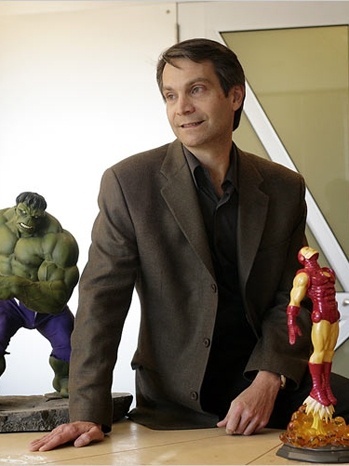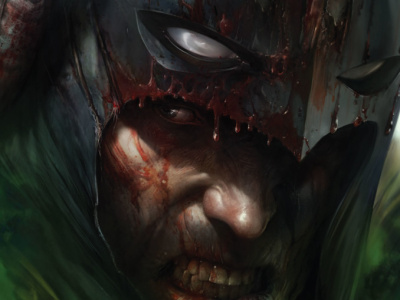Avi Arad has pushed back at Maisel’s version of the expansion of Marvel Studios, but the record as reported by ICv2 appears to back at least the crucial financing portion of Maisel’s version. When Maisel, a graduate of the Harvard Business school and Hollywood insider who had worked with super-agent Michael Ovitz, joined Marvel Studios in 2004 (see “Marvel Hires New Studio President”), Marvel Comics, which had been in bankruptcy less than a decade earlier, was on sound financial footing thanks to merchandise sales spurred by the success of the movies produced by Fox and Sony, but Marvel realized very little money from the actual movies themselves (just $62 million out of the $1.6 billion that Sony earned on the first two Spidey movies).
Maisel’s big idea was that Marvel should produce its own films and keep all the profits from the film and the merchandising for itself, but selling the idea of plunging into the uncertain waters of film production to the notoriously risk-averse, penny-pitching Marvel CEO Ike Perlmutter (see “Unflattering Portrait of Marvel’s Ike Perlmutter in Financial Times”) was no simple task. The concept was hardly new. Under Arad’s leadership, Marvel had planned as early as 2003 (before Maisel arrived) to make some modestly-budgeted films based on minor characters, but planned to leave the major Marvel heroes in the capable hands of the big studios (see “Marvel to Make Its Own Movies”). Arad was comfortable working with the major studios and skeptical that Marvel Studios could make a go of it with big budget films based on its slate of second tier Marvel heroes.
What Maisel brought to the table was a plan to finance the production of major films without Marvel having to risk a penny of its own money. He arranged a revolving fund of $625 million from Merrill, Lynch for which Marvel only had to pledge the screen rights of the characters involved as collateral for the loan (see “Marvel Explains Its Sweet Movie Deal”). Maisel told The Hollywood Reporter that he was also able to quash deals that would have licensed Captain America to Warner Bros. and Thor to Sony, and eagerly reacquired rights to Iron Man (from Paramount) and The Hulk (from Universal), thus reserving these characters for exploitation in Marvel Studios films.
Arad left Marvel Studios in in May of 2006, selling his Marvel stock for $20 a share (Disney paid $51 per share in 2010), fearing that the characters that Marvel Studios controlled were not strong enough to compete with those (Spider-Man, X-Men) that the studio was (at that time, anyway) unlikely to get back. By September of 2006, Maisel was firmly in charge of Marvel’s moviemaking operations (see “Marvel Forms Executive Triumvirate”). When Disney purchased Marvel in 2010 Maisel left the company (see “Marvel Studios Chairman to Resign”), and Kevin Feige, the content mastermind who oversaw the actual production of the Marvel slate (Phase 1, Phase 2, Phase 3, etc.) took over. Currently Maisel is attempting to create a franchise out of Rovio’s Angry Birds (see “Angry Birds Film”).
When Maisel joined Marvel, the company was worth $400 million. In 2010 Disney paid $4 billion dollars to acquire Marvel. There is no doubt that Maisel’s financing plan that allowed Marvel Studios to make major films like the original Iron Man, which earned $585 million in 2008, played a key role in Marvel’s cinematic success. Showing his Hollywood experience, Maisel, who was dubbed “Captain Finance” in 2007 by Fortune Magazine for his innovative financing plan, deftly avoided a last minute glitch, when Merrill Lynch demanded that Marvel put up a third of the Iron Man production cost, by pre-selling distribution rights in enough foreign territories to raise the requisite cash without Marvel having to spend a penny of its own cash.
Still it is important to note the contributions of others (none of this would have mattered if Jon Favreau’s Iron Man film had sucked, or if Feige’s vision of a cohesive Marvel slate had faltered), and to remember that conditions in Hollywood were exactly right for the Marvel move. The DVD market was near peak in 2006, making investing in movies a much safer bet than ever before or since, and making Merrill Lynch’s bet on the fledgling Marvel studios a relatively safe wager.









